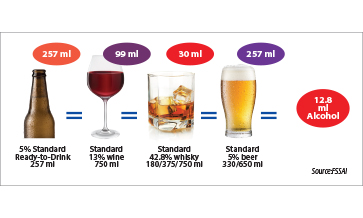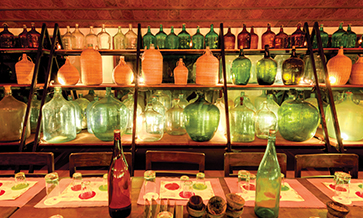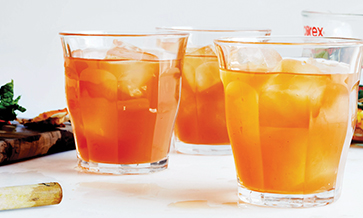The trends that have previously shaped the global beverage alcohol marketplace will be transformed over the next 5 years as the world emerges from the Covid-19 pandemic into a period of growing economic instability.
According to data analysed by the International Wines and Spirits Record (IWSR), the effects of these shifts will be wide-ranging, from the growing importance of the home premise occasion to a moderation trend increasingly driven by the need to cut household spending.
IWSR data shows shifts in the key trends shaping the global alcobev industry in the following areas:
Mass affluence
As the world enters a period of growing economic fragility, those with financial stability – typically consumers with lower levels of debt and secure employment – will provide increasing opportunities for premium-and-above spirits and wine brand owners.
This is a notable shift from the situation during the Covid-19 pandemic, when Millennials led the global consumption bounce-back in 2021 in key markets such as the US, the UK, France, Germany and Brazil.
This phenomenon was driven by their higher levels of disposable income and embracing of more sophisticated home consumption occasions. But this trend is now likely to be reversed by economic instability, leaving younger consumers of legal drinking age with less secure finances and employment prospects in the years ahead.
In China, for example, IWSR consumer data shows that there has been a shift in the alcohol drinking population, with fewer 18-24-year-olds, possibly connected to 20% unemployment among graduates.
Chinese checkers
China’s leadership of the luxury spirits market will come under threat from the US in the next few years. The US status spirits market, spearheaded by high-end agave spirits, is forecast to add the most value to the status spirits category of any individual market over the next 5 years, bringing it almost level with China.
India is also poised to make strong spirits gains thanks to its booming economy; rising consumer incomes; market recovery and growth post-pandemic; and strong consumer confidence.
A number of key factors may dampen further spirits gains in China, such as a proposed government cut-down on conspicuous consumption, falling consumption rates amongst younger consumers, and lower GDP expectations compared to the last 5 years.
However, China has not yet experienced a proper post-pandemic boom. When it does take place, it could help to counteract the impact of these headwinds in the short term.
Indian gains
The most promising growth opportunities for beer in the coming years will be focused on India, Latin America and Africa. IWSR expects global volumes to rise at a CAGR of +1% between 2021 and 2026, driven by Brazil, Mexico, South Africa, Colombia and India.
Beer is also well-positioned to grow in a number of South-East Asian markets. In Brazil, growth has been driven by investments in the on-trade and ecommerce.
In line with this trend, Brazil’s on-trade will contribute the highest volumes to the beer category across the top 20 beverage alcohol volume markets by 2026.
This follows long-term consumption declines of traditional beer in China and the US, and a global volume decline of nearly -7% in 2020, when the Covid-19 pandemic brought alcohol bans (South Africa and India), production stoppages (Mexico) and widespread on-trade closures.
Wine spurs
The total wine category is in volume decline, in line with historical trends. However, Prosecco and Champagne continue to grow, and the high-end is gaining across all sparkling wine segments.
Pent-up demand to celebrate weddings, holiday gatherings and other personal milestones after the restrictions of the Covid-19 pandemic has helped to accelerate growth of sparkling wine in many markets.
A change of attitude is also a key driver, with the drink moving away from exclusive association with formal events and special occasions, to one that can be enjoyed in more relaxed contexts and more frequently.
Premium-and-above Prosecco growth is driven by strong demand in the US and the UK; Champagne growth is centred on the US and Australia; and light aperitifs are growing in Spain, thanks to growing daytime consumption.
RTD category
IWSR data shows that, globally, RTD value will rise at a CAGR of +7% between 2022 and 2026, outpacing a volume CAGR of +5%. This compares with a volume CAGR of +14%, 2016-2021.
The value growth reflects the recent strong performance of premium-plus RTD products across key markets. The shift to premium products ends a period of dramatic volume growth for RTDs, particularly for hard seltzers in the US, as volumes stabilise and other segments of the RTD category drive growth.
Premium-priced RTDs have grown faster than any other segment over the past 2 years, albeit on a smaller volume base, with new products increasingly launching at higher prices.
This is driven by an increase in spirit-based offerings, higher ABVs and well-known premium brand extensions. RTDs are a clear trade-up from beer, with consumers paying roughly double for the same size serve of an RTD in some markets.
E-commerce brakes
Pandemic lockdowns drove rapid alcohol e-commerce growth, prompted by a loosening of regulations, or a boost to existing ecommerce infrastructure, in many markets.
As a result, alcohol e-commerce value grew by over 40% in 2020 alone – compared with value growth of 12% in 2019 and 16% in 2021, across 16 focus markets.
Over the coming years, growth rates for the alcohol e-commerce channel are set to moderate as the market enters a period of post-pandemic normalisation.
However, the overall trajectory remains upward, with alcohol e-commerce expected to contribute an additional US$ 10 billion to the beverage alcohol sector between 2021 and 2026, to reach nearly US$ 40 billion by 2026, across focus markets.
Unlike in previous years, beer/cider/RTDs are projected to register the quickest growth over the next 5 years, and by 2026, these drinks are expected to account for nearly a quarter of online sales.
And while beer will see the largest volume shift to e-commerce by 2026 (vs 2021), spirits will contribute the most value. Wine, the most established category online, will see its share of e-commerce sales slip slightly over the coming years.
Home alone?
Growing economic concerns are set to make the at-home occasion even more significant in the future, as shrinking disposable incomes force many people to cut back on visits to the on-trade.
The post-Covid on-premise recovery has been patchy in many locations, with hospitality hotspots thriving, but other venues struggling to cope with lower customer numbers and rising costs.
IWSR expects the on-trade recovery to be slower than previously expected, although pre-pandemic volumes will likely be regained by 2026, thanks in particular to strong gains for beer in Latin America.
The projected gains follow a period of re-invention for the home premise occasion, which grew increasingly sophisticated during Covid-19 lockdowns with the rise of home delivery platforms, TV streaming services, and consumer interest in mixology and at-home entertainment.
Moderation strategy
Previously driven mostly by health and wellness concerns, moderation in alcohol consumption is now increasingly being spurred by economic worries and a need to cut household spending.
Consumers are choosing to cut down rather than down-trade in many markets. Moderation – both as a lifestyle choice for health and wellness, as well as an economising strategy amidst rising inflation – is taking a number of forms.
About half of all adult drinkers of beverage alcohol surveyed as part of IWSR’s price-sensitivity study across 17 focus markets in the latter half of 2022, expressed interest in moderating their alcohol consumption. The trend is particularly strong in European markets where economic confidence is low, such as in the UK and Germany.
For some consumer segments, such as Millennials in select markets, previous interest in no- and low-alcohol products due to wellness concerns has now been combined with an economic imperative, amplifying the trend.














